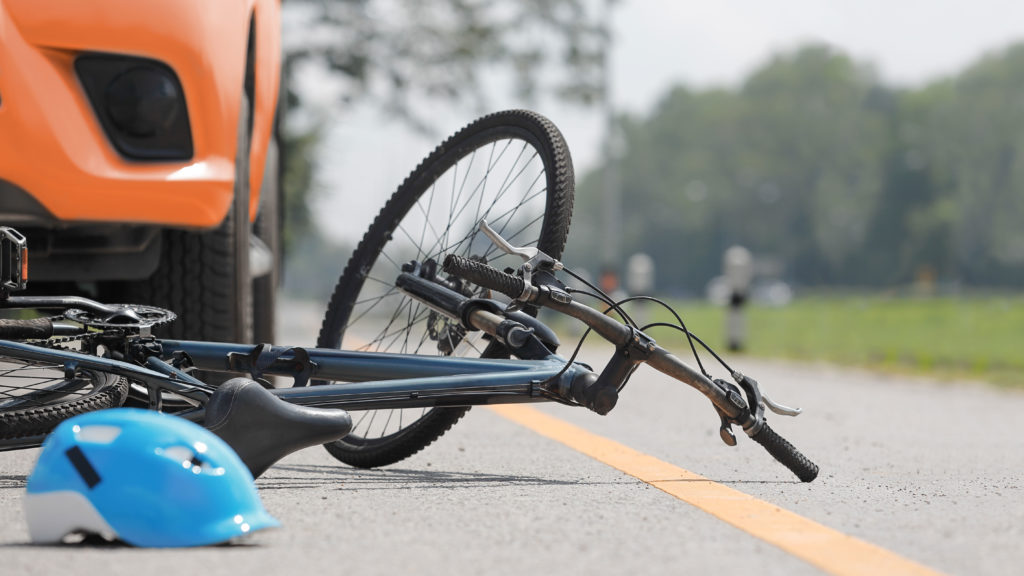The number of people choosing to ride instead of drive is ever-increasing. Given the volume of cyclists and motorists sharing the roads, the number of incidents between cyclist and motorist are relatively few. But the potential for a motorist to harm a cyclist through carelessness or disregard is of concern to some cyclists.
There are some who support a strict liability system who argue strict liability laws make drivers more cautious around cyclists which in turn leads to safer cycling. To be able to determine whether there is merit in such an approach, it’s important to understand what’s actually involved in strict liability laws.
What is Strict Liability?
Strict liability laws are commonly misunderstood. In a technical legal sense, strict liability means automatic responsibility without having to prove fault. A rule making motorists strictly liable when they are in an accident involving a cyclist would mean the motorist was always liable. Under this regime, a cyclist could deliberately collide with a car and then claim compensation from the driver without any questions asked. Most cyclists can see the injustice in this.
That said, that sort of law is not normally what most cyclists actually mean when they advocate for strict liability laws. What they are actually calling for is a rule where a motorist will be liable for a crash with a cyclist unless the motorist can show the cyclist was at fault. What is actually being suggested is a presumption of fault as opposed to strict liability in its technical form. A presumption of fault would mean a shift in the burden of proof.
Currently, in Queensland, a cyclist injured in an accident has the burden of proving the driver was at fault. A shift in the burden of proof would mean there would be an assumption the motorist was at fault. It would then be up to the driver to establish they were not at fault and that the cyclist was responsible.
What is the law in QLD?
Queensland operates a common law or 'fault'-based system. To recover compensation (whether that is for damaged property, injuries or otherwise), you need to prove the motorist was negligent. The burden is on the cyclist (the person seeking redress) to prove their case.
Proponents of the strict liability law say that it places an unfair burden on the cyclist, who is the more vulnerable of the two parties on the road.
The practical reality of the common law system in Queensland, though, is that it is not difficult to establish fault where the motorist has been negligent. Even though the technical legal burden to prove fault rests with the person bringing a claim, the courts recognise the fact cyclists are more vulnerable and that motorists are the ones capable of causing much greater harm. So while there is no strict liability in place, the law does still recognise this imbalance - in much the same way as it does with the last motorist in a rear-end collision (irrespective of that not being a strict law).
The outcome of the matter is then determined by the extent to which each party is to blame. The court will make a finding about that. If the motorist is wholly at fault, then the cyclist recovers their full losses.
If both parties were to blame, then the law ascertains the proportion each contributed to the accident. So if the motorist and cyclist were equally responsible, the cyclist would recover 50% of their loss.
All motorists (even unregistered ones) who injure others are covered by insurance under the Compulsory Third Party (CTP) scheme, which forms part of our registration fees. The benefit of the current system is that it only compensates people for harm caused by others. There is no recovery to the extent we are at fault ourselves. That limits the number and size of claims and enables the ongoing viability of the system.
Do the laws apply to both Civil and Criminal cases?
The debate about strict liability laws is usually more centred around the civil aspect rather than criminal offences of motorists.
It would be difficult to see the law being altered to make it an automatic criminal offence if a motorist was involved in an incident with a cyclist (irrespective of whether the driver had done anything wrong or not). There are some more minor regulatory offences or even statutory workplace offences where such a position is adopted, but there is much to be said, most would argue, for one of the cornerstones of our criminal system being maintained: the presumption of innocence until proven guilty.
In the civil arena, strict liability laws are really more about insurance. Ultimately it is the insurer of the motorist who pays any compensation for their wrongdoing.
It is said by some that strict liability laws would simplify the insurance claim process because of the presumed fault of the driver of the motor vehicle. But strict liability laws, in most countries where they exist, still allow the insurer of the motorist to argue the liability or fault of the cyclist. In other words, the dispute between the fault of the cyclist and the motorist still exists (it’s just that the cyclist enjoys a slight advantage by initially having a presumption of innocence until fault is established).
Are there Strict Liability laws elsewhere?
Some countries (many of them European) do operate under a strict liability system. They are usually a variation of the ”shifted burden of proof” model. They don’t avoid the issues about fault because most (including the Netherlands) still afford the motorist the right to argue the cyclist is at fault.
There are examples in Australia of a strict liability system. If a cyclist is injured by a motorist in Victoria, then no fault is required. It sounds inviting, but the trade-off is that you are less able to recover your actual loss. Only particular categories of injuries (measured under an artificial rating system) qualify for compensation. And there are restrictions on the amount recoverable too.
What is the best system?
Although the Queensland system may be imperfect at times, many would argue it strikes the best balance between ensuring the right outcome is achieved (through having to accept personal responsibility) and giving the right to recover the true extent of your loss.
Others would argue strict liability laws would make cycling safer because motorists would have an increased burden of proof in the event of an accident. But the reality of there being insurance in place means that such laws are unlikely to have the desired effect. There are many other avenues better placed to achieve greater cycling safety.
Author

Emily Billiau | Principal
Phone | (07) 3014 6590
Email | [email protected]
Emily is a Principal at McInnes Wilson Lawyers in the Personal Services and Injury team, further managing the CycleLaw division. With a keen interest in cycling-related issues and claims, she has extensive experience in insurance litigation & dispute resolution for cyclists, and is a passionate advocate for cycling clients - whether they be leisure or social riders, professional cyclists or commuters.
Breaking down the smokescreen of uncertainty through a unique step-by-step approach.
Cycle Law © 2020 Privacy & Disclaimer

